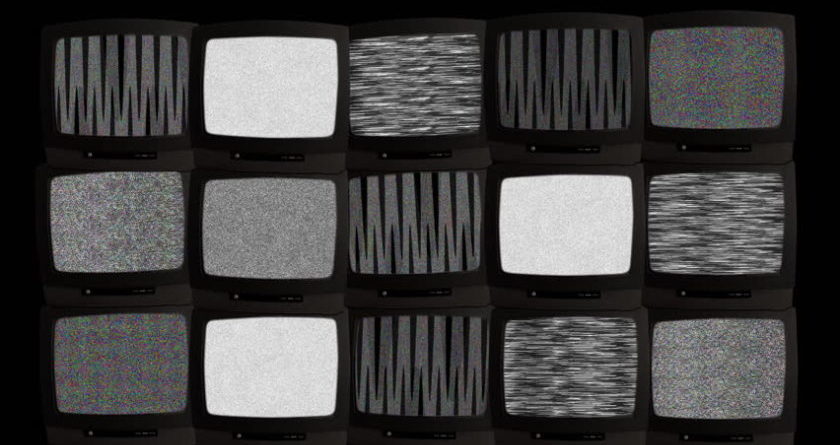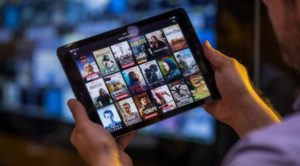M+E Daily

Networks Were Built for Times Like These
Story Highlights
Sitting at home under semi-house arrest (hey, if it ain’t voluntary, it’s confinement), we took a break, watched a movie on one of our streaming services.
The kids take this stuff for granted – TV and iPads, Instagram or Qubi or YouTube on their phones. They’re nibbling, not consuming. For them, it’s second nature.
They’ve never known, never had to deal with having to work for their connections and then have the data stream skip a beat now and then. They’ve never heard of a dial-up modem, never worked with 40-50 Kbits transfer speeds.
As they hopped between streaming services, we told them how Victoria’s Secret wanted to webcast their fashion show online in the late 1990s.
We reminisced how Push Mohta, Manny Robles and the CERFnet (California Education and Research Foundation) team checked every connection, every cable three times over, to ensure two million viewers got their show. Every other ISP did the same to ensure the viewers didn’t hurt “their” fragile network.
The internet stuttered a little, but held.
Over the next 20 years, hundreds of thousands of miles of cable have been deployed on the world’s ocean floors to connect nearly most every continent, most every country and billions of people.
The wired and wireless internet was developed as a fast, reliable way to exchange serious commercial and governmental business. But a few adventurous souls thought that since video, movies and series were just another form of data; they could put all of that good bandwidth to use and stream content, bypassing the appointment TV folks.
Most felt streaming content was a waste of good business bandwidth. And … it would break the internet. Early on, it stuttered – a lot – but it held.
 Cord-cutting and a pandemic
Cord-cutting and a pandemic
Since streaming content requires more bandwidth and more consistent throughput, the industry developed increasingly efficient codecs (encoders/decoders). The encoder compresses the data to reduce the amount of bandwidth required for transmission while the decoder decompresses the data on the device for optimum enjoyment. And the industry and individual streaming firms continue to develop newer, better, more bandwidth-efficient codecs to improve content distribution to your screen.
Of course, it also takes time for the content you requested to get from, say, Los Gatos to your screen in NYC, Toronto, Paris or Melbourne. So Netflix, YouTube and the world of streaming entertainment took a shortcut. To deliver what you want, where you want it and the instant you want it (yeah, you’re impatient), Netflix and the growing list of streaming services take advantage of content distribution network (CDN) specialists.
Firms like Akami, AWS, Alibaba, Tata, Google and others strategically locate video servers around the globe so the show/movie can be delivered (BAM!) to screens almost immediately after you’ve made your choice.
And with people increasingly cutting/shaving their cable service, streaming video increased to the point where almost 80 percent of the internet traffic is video.
Folks’ growing hunger for great entertainment bent the wired/wireless internet, but it didn’t break. Things were okay (great even) until the pandemic happened. We’ve experienced pandemics before (the most recent was SARS in 2004) but nothing like COVID-19.
In just a few months, everyone on the planet was told to shelter-in-place and work from home.
Suddenly, it became important to put the communications tools we had taken for granted to work in creative, profitable ways for business and personal use. To keep business moving forward, companies and individuals used the next best thing to being together — video conferencing — to keep projects (and products) moving forward.
Since content creation/production people have worked on projects around the globe, studios and content owners expanded and refined their video conferencing activities, because it wasn’t just good to use … it became vital.
 Zoom, GoToMeeting, Teams, BlueJeans, WebEx, every video conferencing tool/service replaced conference room meetings to monitor, manage and adjust post-production activities in near- real time. Teams realized that staying visually in touch is more important than a phone call or email.
Zoom, GoToMeeting, Teams, BlueJeans, WebEx, every video conferencing tool/service replaced conference room meetings to monitor, manage and adjust post-production activities in near- real time. Teams realized that staying visually in touch is more important than a phone call or email.
Perhaps more important was the fact that competent, confident executives quickly found that staying in touch didn’t mean you actually had to touch.
And despite the unforeseen demand, the internet bent, but didn’t break. The continued investment in fixed, WiFi and mobile networks is proving its value as global network demand continues to rise.
Can the internet hold?
According to Cisco, by 2023, nearly two-thirds of the global population will have internet access. There will be an estimated 5.4 billion total users, compared to 4.5 billion this year.
Streaming to home screens was relatively easy in the U.S. and in most industrialized countries because high-speed fixed broadband was widely available. But for connectivity anytime, anyplace, people increasingly rely on wireless and WiFi connectivity because it’s faster, more economic to deploy, and increasingly reliable.
According to Strand Consult, 5G will come faster than 2G, 3G or 4G; and with each generation, implementation and adoption will take less time. This is important because global 5G will be a solid infrastructure for AI and IoT applications, as well as tomorrow’s autonomous vehicles, smart cities, connected health and immersive video.
By 2023, Strand projects:
• 70 percent of the global population will have mobile connectivity with an average speed of 45.9 Mbps, compared to 110 Mbps in 2018;
• 44.7 percent of mobile connections will be 4G compared to 69.5 percent in 2018;
• 3G and below will be 0.8 percent of total mobile connections compared to 19.2 percent in 2018;
• Households will have, on average, nearly 10 mobile connections, half being video capable.
In most countries 5G will be marketed as an alternative to fixed line broadband that will be faster and more versatile – take your bandwidth with you, anywhere and on any device. That is increasingly important as people rush to expand their personalized entertainment selections.
 The content conundrum
The content conundrum
The M&E industry has shown there is a seemingly endless selection of content to meet every taste, every mood.
Streaming demand has grown so much (and has become so important) that EU commissioner Thierry Breton asked Netflix, YouTube, Disney+, etc. to reduce the image quality from HD to SD during the pandemic.
What that really did was cut data speed from 5 Mbps to 1 Mbps; and if you’re streaming content to 200 million households, that’s a lot of bandwidth.
But the internet didn’t even have a touch of indigestion — it held. Even while internet usage and applications continue to grow.
Vint Cerf, one of the “fathers” of the internet, has stated that the network of networks is performing exactly the way the early developers originally planned: to hold up well under an ever-increasing load, regardless of any global crisis.
It’s a good thing because households everywhere have needed daily relief from the pandemic, and enjoy what today’s technology and creative minds are offering to the global audience.
Andy Marken, President, Marken Communications, is an author of more than 700 articles on management, marketing, communications, industry trends in media & entertainment, consumer electronics, software and applications.









